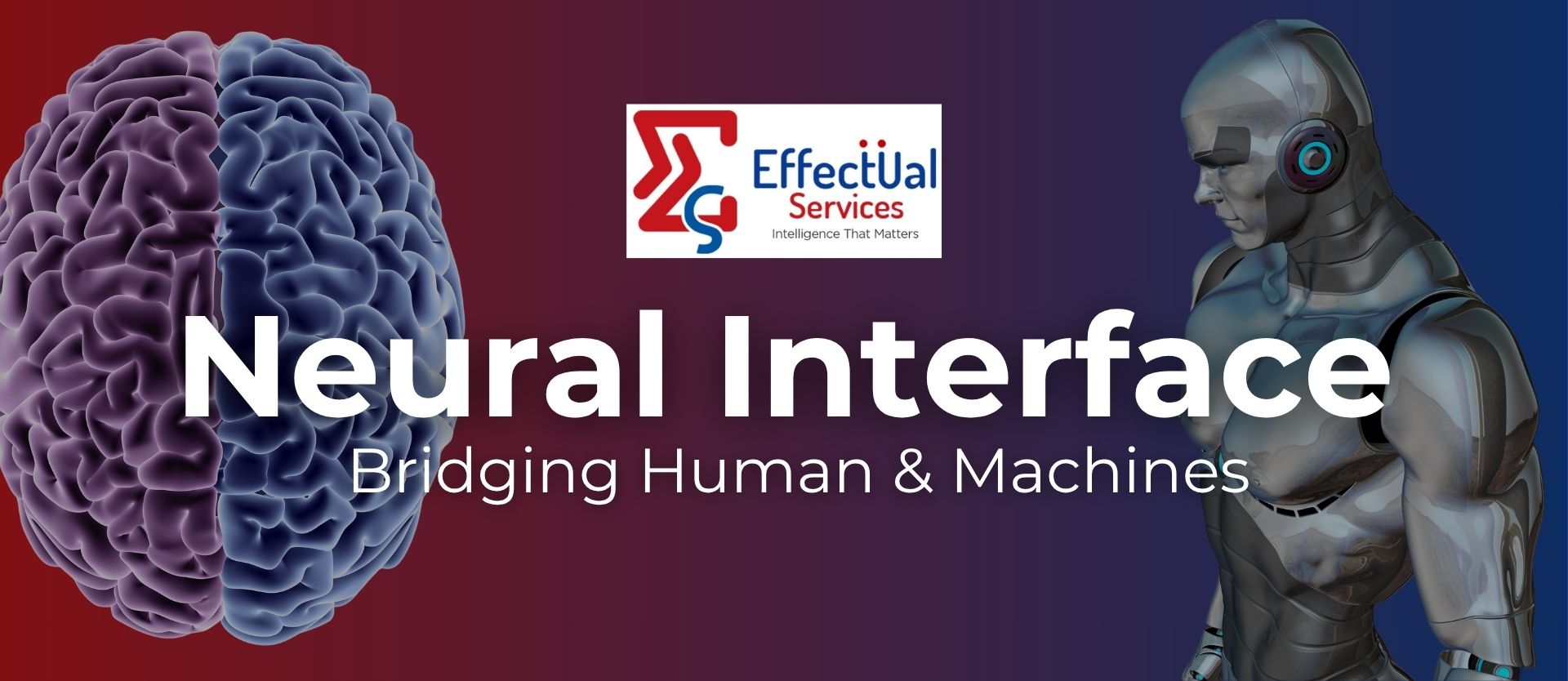Neural Interface: Bridging Humans and Machines

Neural Interfacing is a powerful means which can develop a robust bridge between humans and machines. In this paper we emphasize on neural interfacing as an evolving trend in wireless communications by taking into account one of its important application i.e. cyborgs. The ultimate goal of neural interface research is to create links between the nervous system and the outside world either by stimulating or by recording from neural tissue to treat or assist people with sensory, motor, or other disabilities of neural function. Although electrical stimulation systems have already reached widespread clinical application, neural interfaces that record neural signals to decipher movement intentions are only now beginning to develop into clinically viable systems to help paralyzed people.
What is Neural Interfaces:
Neural interfaces connect our brains to devices. They use electrodes or sensors to catch neural activity. Then, they turn these neural signals into commands for different systems. Neural interfaces, brain-computer interfaces and other devices that blur the lines between mind and machine have extraordinary potential. These technologies could transform medicine and fundamentally change how we interact with technology and each other. At the same time, neural interfaces raise critical ethical concerns over issues such as privacy, autonomy, human rights and equality of access.
Importance of Protecting Neural Interfaces Through Patents:
Protecting privacy rights is a global legal challenge in neurotechnology. The neural networks invention patenting involves unique challenges. The difficult to understand neural networks, connected with rapidly advancing Al technologies, which increases the difficulty for patent drafting and claiming the essential elements that include the invention's novelty and technical contribution. By getting the idea of the role of neural networks in patent claims is essential for innovators looking to secure robust patent protection for their technologies.
The human brain guides the designing of the Neural networks, and help to construct functional models having interconnected nodes or “neurons.” These networks are designed to recognize patterns, learn from data, and make decisions based on the information they process. Neural networks are a foundational component of many AI systems, enabling machines to perform tasks such as classification, regression, clustering, and even generating new data.
Steps to Patent Neural Interfaces:
First, perform a prior art search for comprehensively check and confirm that the invention is novel or not. Second, draft a patent application that clearly explains the problems with prior art and how the invention solves them and also include specific claims and detailed description of its features.
Next, select the jurisdictions where the invention has commercially profitable. The Patent Cooperation Treaty (PCT) can simplify the process by allowing applicants to file a single international application.
Global Policies and Incentives for Neural Interfaces Patent:
Brain-Computer Interface (BCI) is a computer-based system that directs communication link between the brain’s electrical activity and an external device, most commonly a computer or robotic limb. It acquires brain signals, analyzes them and translates them into commands that are relayed to an output device to carry out the desired action. It's application spans different domains such as: Healthcare, Gaming and Entertainment, Education and Assistive Devices. As companies like Elon Musk’s Neural ink is advancing towards human trials and others developing different solutions, India faces critical regulatory challenges and issues related to patent rights of such technologies or devices.
As new technologies enable progressively more neural, physiological, and behavioural data to be collected, the need for improved computational processing and mathematical dimensionality reduction techniques will increase exponentially in order to facilitate effective analysis and use of the data. These needs are especially essential for closed-loop BCI systems that rely on automated, real-time analysis of recorded neural signals. Effective analysis and integration of data across research groups will also require revolutionary new approaches to data sharing, including standardization of protocols and data formats, ability to effectively merge data across multiple modalities and scales, and incentive structures that promote sharing of data and collaborative efforts across individual laboratories. Notably, for new efforts under DARPA's brain function research portfolio, high priority is being placed on the sharing of newly developed protocols and resulting data. While DARPA has long placed an emphasis on collaboration across multi-disciplinary research teams, selection criteria for new efforts also include requirements for sharing data among DARPA-funded teams, as well as making data available to the broader scientific research community at an accelerated pace.
Challenges in Patenting Neural Interfaces: -
The desirable implantable neural interfaces can accurately record bioelectrical signals from neurons and regulate neural activities with high spatial/time resolution, facilitating the understanding of neuronal functions and dynamics. However, the electrochemical performance (impedance, charge storage/injection capacity) is limited with the miniaturization and integration of neural electrodes. The “crosstalk” caused by the uneven distribution of electric field leads to lower electrical stimulation/recording efficiency. The mismatch between stiff electrodes and soft tissues exacerbates the inflammatory responses, thus weakening the transmission of signals. Though remarkable breakthroughs have been made through the incorporation of optimizing electrode design and functionalized nanomaterials, the chronic stability, and long-term activity in vivo of the neural electrodes still need further development. In this review, the neural interface challenges mainly on electrochemistry and biology are discussed, followed by summarizing typical electrode optimization technologies and exploring recent advances in the application of nanomaterials, based on traditional metallic materials, emerging 2D materials, conducting polymer hydrogels, etc., for enhancing neural interfaces.
Conclusion
The neural interfaces present a complex intersection of technological advancement, ethical considerations, and legal frameworks Protecting intellectual property and increase the innovation, and upscale the global shift. These technologies provide potential to transformation, especially in healthcare and human augmentation, they also raise critical questions about privacy, safety, and equitable access. A balance is being maintained between ethical foresight and technological innovation through a strategy that has to be proactive and also team-based which is essential to the future of neural interfaces. We can use neural interfaces to their full potential and preserving basic human rights and encouraging responsible growth.
Solutions Driving Innovation & Intelligence
Enabling Fortune 500's, R&D Giants, Law firms, Universities, Research institutes & SME's Around The Globe Gather Intelligence That
Protects and Nurtures Innovation Through a Team of 250+ Techno Legal Professionals.

